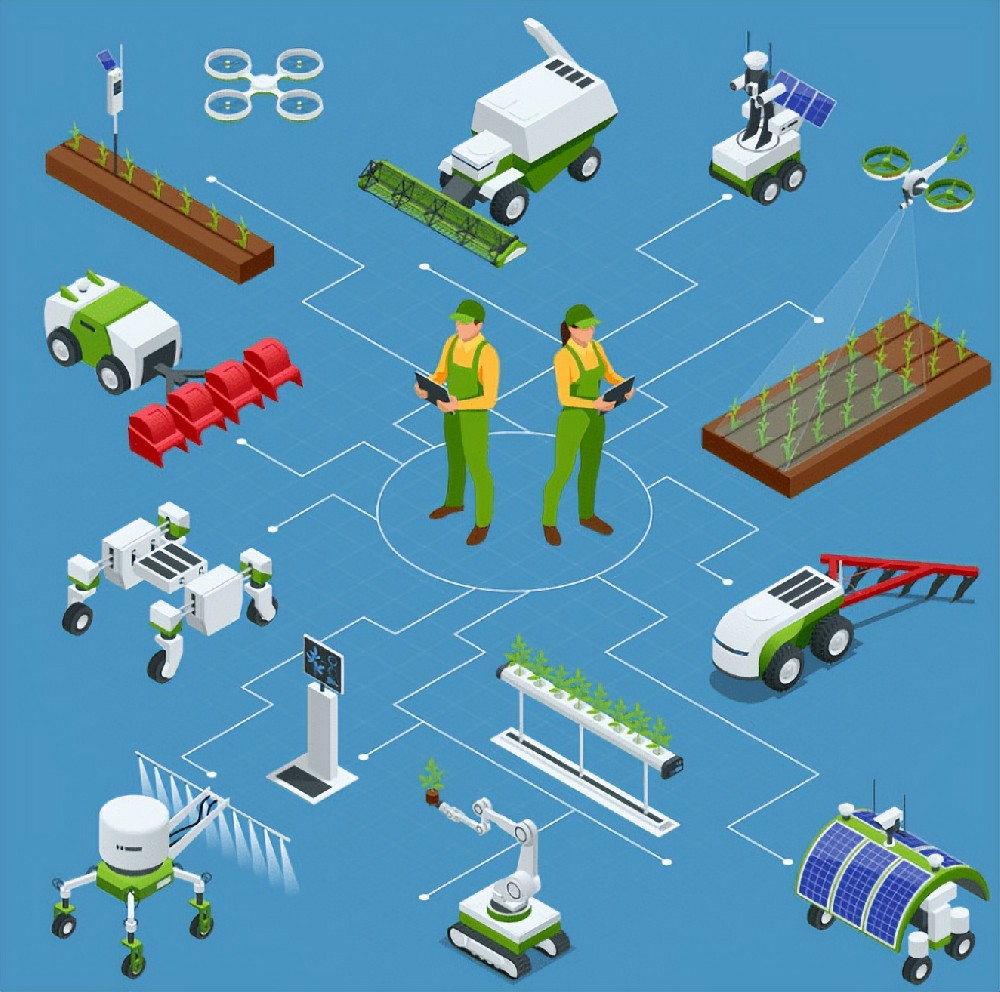

— Blogs —
—Products—
 Consumer hotline +8618073152920
Consumer hotline +8618073152920 WhatsApp:+8615367865107
Address:Room 102, District D, Houhu Industrial Park, Yuelu District, Changsha City, Hunan Province, China
Product knowledge
Time:2024-03-03 16:11:05 Popularity:1139

Soil moisture sensor-based irrigation is an automated system that uses sensors to measure moisture levels in the soil and then adjusts irrigation accordingly. This technology is a key component of smart irrigation systems, which help conserve water by ensuring that gardens, landscapes and farmland are only watered when necessary. These systems rely on real-time soil moisture data to automatically irrigate, ensuring that crops receive the optimal amount of water at the right time. This approach is the opposite of traditional irrigation schedules, which may not accurately reflect the needs of plants, resulting in over- or under-watering.
1. Deploy soil moisture sensors:These devices are placed at different depths in the soil to measure volumetric water content. They can be capacitive, which measures the soil's dielectric constant (a property that varies with humidity), or tensile, which measures the water tension in the soil.
2. Data transmission: The humidity data collected by the sensor is transmitted to a central control system. This can be done via a wired or wireless connection, especially in large or remote fields.
3. Control system:The system analyses the moisture data against pre-set thresholds to determine whether the soil moisture level is suitable for plant growth. If the soil is too dry, the system activates irrigation until the desired moisture level is reached.
4. Irrigation activation:The control system is connected to an irrigation valve and pump. If soil moisture levels fall below a predefined threshold, the system activates irrigation hardware such as sprinklers, drippers or water emitters to water the soil. The system also adjusts the duration of irrigation based on how much water is needed.
5. Monitoring and Adjustment:The system continuously monitors soil moisture levels and adjusts irrigation in real time to respond to changing conditions. This includes weather events, evapotranspiration rates and specific crop water needs.
6. Adaptive learning: Advanced systems can use machine learning algorithms to adapt to changing conditions such as seasonal changes, plant growth and weather patterns to further optimise water use.
7. User Interface:Many smart irrigation systems have a user interface that allows the homeowner or farmer to monitor soil moisture levels, adjust settings, or manually override the automated system.

- Water Conservation:These systems use only the right amount of water when necessary, greatly reducing water waste. This is critical in areas facing water shortages.
- Improves crop yield and quality:Proper watering promotes plant growth and yield. Over- or under-watering can stress plants, making them more susceptible to disease and reducing the quality of yields.
- Energy efficiency: Reducing unnecessary irrigation also saves the energy needed to pump and distribute water, especially in large-scale operations.
- Cost savings: Reducing water and energy use saves money. In addition, optimising water use reduces the need for water treatment and fertiliser application.
- Environmental protection: Reducing runoff and deep percolation helps prevent soil erosion, nutrient loss and groundwater contamination.
This technology is increasingly being integrated into precision farming practices to help farmers manage water more efficiently and optimise crop yields. It is also a valuable tool for home gardeners seeking to maintain healthy gardens while being environmentally responsible.

Soil Moisture Sensor Based Irrigation System Implementation Considerations
- Sensor Placement:Strategic placement of sensors is critical to accurately assess soil moisture in different field areas, taking into account crop type, soil texture and root depth.
- System Calibration:The system must be calibrated to the specific crop water requirements, soil type and local climatic conditions to ensure accurate irrigation.
- Maintenance: Regular maintenance of sensors and irrigation equipment is essential to keep the system functioning properly and prevent malfunctions.
Cost: Initial setup costs can be high, but long-term savings and benefits usually justify the investment.

In conclusion, soil moisture sensor-based irrigation systems represent a smart approach to agricultural water management. By utilising real-time data, these systems optimise water use, improve crop health and yields, and promote more sustainable agricultural practices. As technology advances and becomes more accessible, more and more farmers are likely to adopt these systems.
Agriculture-Sensors-Catalog-NiuBoL-2024.pdf
Related recommendations
Sensors & Weather Stations Catalog
Agriculture Sensors and Weather Stations Catalog-NiuBoL.pdf
Weather Stations Catalog-NiuBoL.pdf
Related products
 Combined air temperature and relative humidity sensor
Combined air temperature and relative humidity sensor Soil Moisture Temperature sensor for irrigation
Soil Moisture Temperature sensor for irrigation Soil pH sensor RS485 soil Testing instrument soil ph meter for agriculture
Soil pH sensor RS485 soil Testing instrument soil ph meter for agriculture Wind Speed sensor Output Modbus/RS485/Analog/0-5V/4-20mA
Wind Speed sensor Output Modbus/RS485/Analog/0-5V/4-20mA Tipping bucket rain gauge for weather monitoring auto rainfall sensor RS485/Outdoor/stainless steel
Tipping bucket rain gauge for weather monitoring auto rainfall sensor RS485/Outdoor/stainless steel Pyranometer Solar Radiation Sensor 4-20mA/RS485
Pyranometer Solar Radiation Sensor 4-20mA/RS485
Screenshot, WhatsApp to identify the QR code
WhatsApp number:+8615367865107
(Click on WhatsApp to copy and add friends)